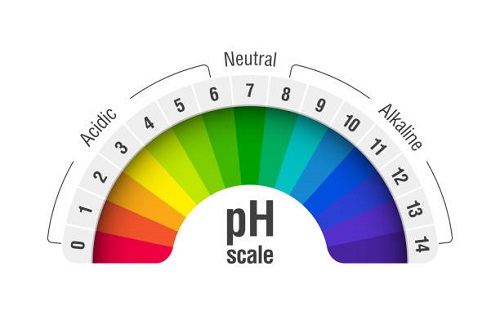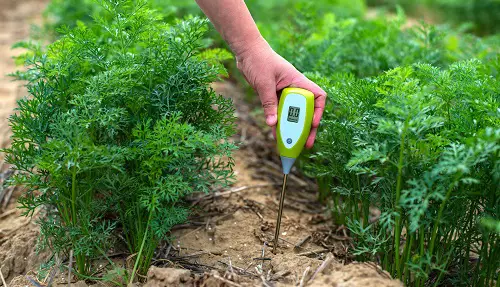Learning How to Change Your Soil pH is important for a healthy harvest. Here are some easy, inexpensive, and effective methods!
If your plants are showing signs of undernourishment despite all the favorable conditions, the soil’s acidity might be an underlying reason. Determine the soil pH as the first step, and then learn How to Change Your Soil pH, amending it with the right nutrients.
Learn How to Check the Soil pH at Home here
How to Change Your Soil pH

The soil pH is a measure of the acidity or alkalinity in soils. A pH level below 7 is acidic, and above 7 is alkaline. Most of the plants prefer neutral pH ranging from 5.5-7.
Lowering pH Level to Make Soil Acidic
1. Manure
Adding manure is the best way to make your soil acidic. Manure not only lowers soil pH but also provides other necessary components, adding microorganisms and good insects, improving soil texture, and making it porous.
However, lowering soil pH with manure can be a slow process.
2. Used Tea or Coffee Grounds
Used tea or coffee grounds can lower your soil pH, although they can’t make a big change in soil pH, as most of its acidity gets removed after brewing. But you should use it constantly to see some changes.
It also contains nutrients and trace elements like Nitrogen, Potassium, Phosphorous, Magnesium, and Copper, which are essential for the healthy growth of plants. Using it also deters insects like fire ants and snails.
Find out some Amazing Coffee Uses in the Garden here
3. Sulfur
This is the fastest way to lower your soil pH. Sulfur can be applied in higher quantities if plants are not planted in soil. Follow product instructions before application.
There are different kinds of sulfur available, but Aluminum sulfate works instantly as it dissolves in soil. Be cautious while using it because it can cause aluminum toxicity in some plants.
Raising pH Level to Make Soil Slightly Acidic or Alkaline
4. Wood Ash
If your soil is acidic, then wood ash is the best option for you to increase soil pH. Wood ash also contains potassium that plants use for fruit production. It is good for vegetables and fruits.
However, do not use cardboard ash or wood ash with urea because it releases ammonia gas in contact with wood ash. Do not use it in the soil where you sowed seeds.
Learn about Using Wood Ash in the Garden here
5. Limestone
Adding limestone to raise your soil pH is another good option. If you have a big garden, use a drop spreader to add it to the soil. In a small garden, simply add it manually.
Points to Remember
- Don’t apply any of these simultaneously with fertilizer in the same spreader.
- If you are unsure about the exact soil pH level, don’t add too much quantity of any of the contents.
- Areas with good rainfall and a cold climate have slightly acidic to acidic soil.
- Areas having less rainfall remain dry or come under the tropics have neutral to alkaline soil.





I have put to much baking soda in my plants ! What do I do to neutralize it? Please help. My babies are hurting. Thanks
Put a little lime on it. It will neutralize the baking soda
To whom it may concern;I have tried to grow a gardenia plant 4 different times. Tried in pots and in the ground with no success. Now I would like to grow a tree in a pot.I would appreciate any help I can get,PLEASE. Yours Pat.
Thank you very much for these tips. I will try them out.
Cheers!